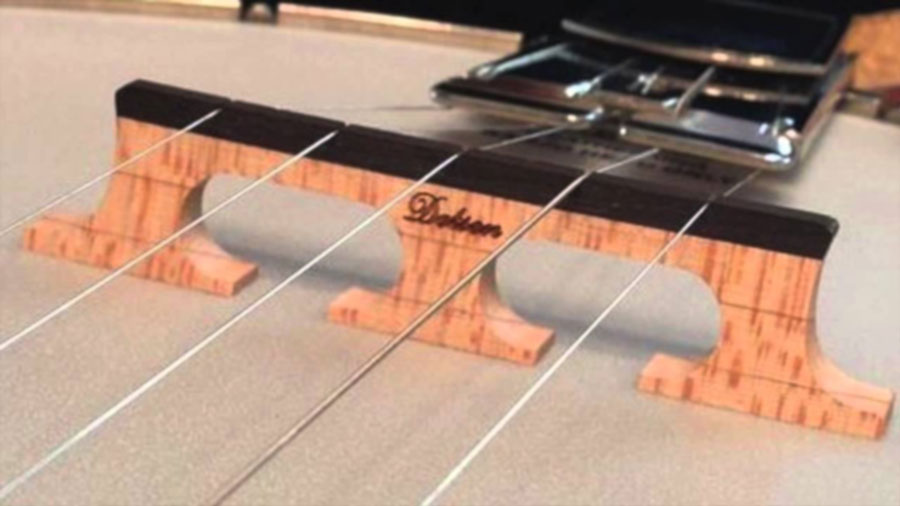If you just bought a new banjo, or if it just not sounding right, you might need to set it up.
It's not as hard as it seems, but if you don't feel confident enough to carry out the steps to setting up your banjo, you might want to go to your local guitar store and seek out the help of a pro guitar/banjo technician.
First of all, here is a very insightful video on the subject.
Here are the steps to set up your banjo. Make sure you follow this order of steps exactly, so you won't have to come back and redo anything.
Tune your banjo
The first step is to tune your banjo to standard tuning. Don't worry about intonation and the rest, we'll take care of it soon.
Checking the bow in the neck.
Check the bow (curvature) of your banjo's neck. If your neck is not set up correctly, it can lead to fret buzz, or too high action.
While extreme neck bow can be observed with just your eyes, it is better to use a straight tool. If you don't have one handy, hold down the low D string at the 1st fret with a capo, and at the 22nd fret. The string should form a straight line.
If not, you will need to adjust the truss rod by tightening or loosening the truss rod nut.
It is located on the top side of the peghead under anm access cover.
Turning the nut clockwise tightens the neck and decreases neck bow, while turning it counterclockwise loosens it and increases neck bow.
Head tension
Depending on whether you like a bright or a mellow tone, you will need to tap-tune the head and adjust the tension to between G or a B.
New banjos tend to need to be tightened more often than old banjos. In fact, some older banjos will need their heads loosened every now and then.
Banjo bridge adjustment
If your banjo is brand-spanking new, here are the steps you need to take to set it up.
If you are just adjusting the bridge, skip step 1.
1. Awaken the bridge
A new banjo will have it's bridge laying flat on the banjo's skin. You need to bring it upright by doing the following:
- Loosen the strings by turning the tuning pegscounter-clockwise.
- Once the strings are loose enough, lift the bridge up so it can stand upright under the strings.
- Position it to be aligned with the neck of the banjo, about 5 cm from the tailpiece.
Now you can move to the 2nd step of setting up your new banjo.

2. Tune the low D string
Your bridge is upright, but it may not be in the exact right place. The good news is that tuning and setting the intonation on a banjo is very simple.
- Make sure the low D string is resting in the suitable groove in the bridge and the nut.
- Play the string open, and tune it to the correct pitch using an electric tuner.
- Now you'll adjust the intonation. Hold down the 12th fret and play the note. You are aiming to play a D note, just 1 octave higher. The tuner will show whether you are flat or sharp. If the fretted note is flat then move the whole bridge slightly forward. If it is sharp, move it backwards.
- Adjust the bridge until you get a D on the open string, and at the 12th fret.
3. Tune the high D string
Now it is time to tune the high D string. Why this one and not one of the middle strings? Because by tuning the 2 outer strings first, you are positioning your bridge perfectly.
Repeat the same steps for the high D string, just like you did with the low D.
4. Tune the rest of the strings.
After you fininsh tuning the low and high D strings, and their intonation is spot on, you tune the rest of the strings as well.
That's all there is to it, you’re ready to play your banjo!
Banjo string height adjustment
Normal string height on a banjo is 1/8″ above the 12th fret and 9/64″ above the 22nd fret, which is measured to the center of the string from the top of each fret.
If you need to adjust your banjo's action, you will need to adjust the 2 rim rods traversing the center of the rim.
- Lowering the action: loosen the inner nut on the lower rod and tighten the outer nut.
- Raising the action: loosen the outer nut and tighten the inner nut.
Easy as pie in South Carolina.
Adjusting the tailpiece
If you have a quality banjo, you can fully adjust the tailpiece to get the tone you desire.
How do you adjust the tailpiece? You can adjust the angle of the tailpiece with a screw found on the back of it.
To get a crisp, bright tone, adjust the tailpiece down closer to the head.
In contrast, loosening it farther away from the head will have the opposite effect.


Thanks for the post. I was wondering if you could answer a question for me. What's the best type of banjo tuner to get for a beginner player? I'm deciding whether I want to get a clip on tuner or on the of plugin kind. I'd be using it on my banjo. Thanks!
Hi, Snark makes great clip on tuners.
I am trying to place the bridge on my 5 string banjo, and do not understand where the center of the 12th fret is, is it the center of the 12th fret band or the center between the 12th and 13th frets?
Thanks for and info.